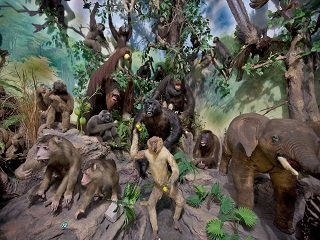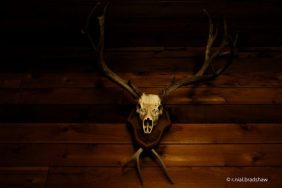 Taxidermy is actually an ancient form of preserving animals for many purposes and contrary to popular myth, it is not just for hunters. Taxidermy is represented at several of our national museums and it is a great method of teaching and remembering our history.
Taxidermy is actually an ancient form of preserving animals for many purposes and contrary to popular myth, it is not just for hunters. Taxidermy is represented at several of our national museums and it is a great method of teaching and remembering our history.
The very first taxidermied specimen that I ever laid eyes on was the horse Comanche when I was in third grade. It was in a Kansas museum and it made an impression on me. Comanche was the horse ridden by Captain Myles Keogh in the Battle of Little Bighorn in 1876. A taxidermist by the name of Lewis Lindsay Dyche taxidermied the horse for the 7th Calvary at the time.
The Museum of Natural History in New York City, NY contains one of the most breathtaking displays of taxidermy, both new and old, anywhere in the world. There have been books written that featured this museum’s taxidermy dioramas and they are spectacular. If you can’t make it to the museum in person, I encourage you to search their digital images online. It will be worth it.
The displays are unique because not only do they skillfully capture animals in natural poses, but the animals are framed in their own little diorama of their natural habitat as well. It is one thing to see animals on the wall, but to see them in their actual habitat really completes the viewing process and nobody does it better than the MNH does.
Everyone knows that President Teddy Roosevelt’s life could not be represented without mentioning hunting and taxidermy. And speaking of the 7th Calvary, did you know General George Custer was also a taxidermist? He was and most people don’t know about it.
Custer was an avid hunter and he was also a skilled taxidermist. He had a nice collection of Native American artifacts and taxidermy specimens. I have tried to find out where they are located currently but have failed to do so. They once were displayed at the Detroit Audubon Club.
Besides natural history, taxidermy is a great way to pass on our hunting heritage and to remind every new generation of hunters that there were plenty of hunters that came before them. As a child, my uncle had several deer racks displayed on various plaques throughout his home. I didn’t understand what they were but I knew they were mysterious and I knew they were important. They left an indelible impression on me in my youth and it was only natural that I later became interested in hunting and gathering my own deer racks to display.






